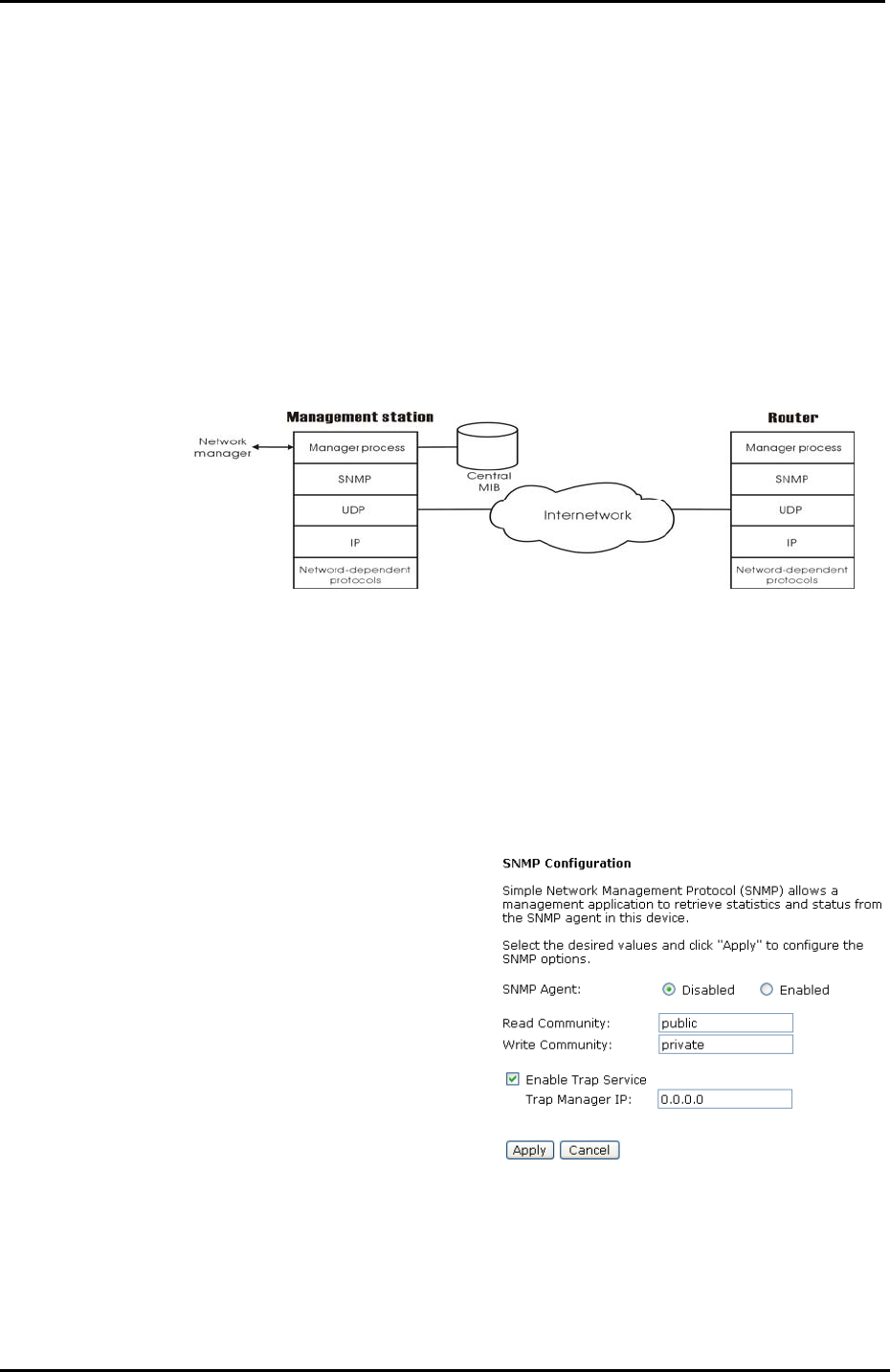
ADSL Router User Manual
122
SNMP Setting
SNMP, the abbreviation of Simple Network Management Protocol, is used to refer to
a collection of specifications for network management that include the protocol itself,
the definition of data structures and associated concepts.
A management station performs the monitoring function by retrieving the value of
MIB objects. The management station and agents are linked by a network
management protocol that is SNMP. The SNMP includes three key capabilities: get,
set and trap. A single management station can handle many agents as long as
SNMP remains relatively “simple”, so the number can be high (hundreds or so).
The following picture is the typical configuration of protocols for SNMP. As for a
stand-alone management station, a manager process controls access to a central
MIB at the management station and provides an interface to the network manager.
The manager process achieves network management by using SNMP, which will be
implemented on top of the UDP, IP and the relevant network-dependent protocols
(e.g., Ethernet).
For an agent device that supports other applications, such as FTP, both TCP and
UDP are required. An agent may issue a trap message in response to an event that
affects the MIB and the underlying managed resources.
Note: There is no ongoing connection maintained between a management station
and its agents. Instead, each exchange is a separate transaction between a
management station and an agent.
Each agent is responsible for notifying the management station of any unusual
event; for example, if the agent crashes and is rebooting, a link fails or an overload
condition as defined by the packet load crosses some threshold. These events are
communicated in SNMP messages known as traps.
SNMP Agent:
Choose Disable to close this function;
choose Enabled to open this function.
Read Community:
SNMP community for reading access
only. The default setting is public.
Please key in the data that your ISP
provided.
Write Community:
SNMP community for reading and
writing access. The default setting is
private. Please key in the data that
your ISP provided.
Enable Trap Service:
Configure the SNMP service to send a
trap when it receives a request for
information that does not contain the
correct community name and does not
match an accepted host name for the
service. Check this box to enable this
function, otherwise uncheck it.


















